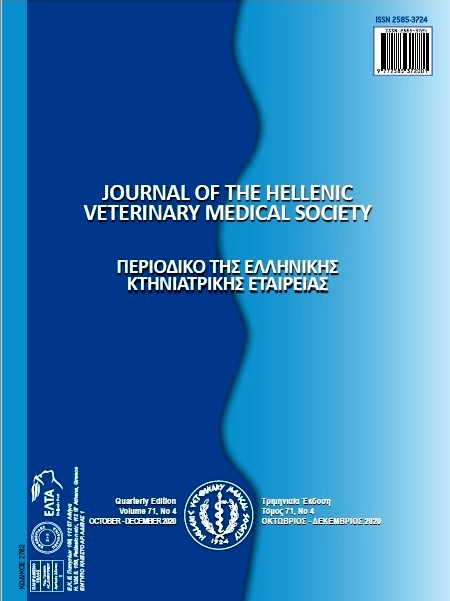Effect of genotype on adipose tissue fatty acids profile of two autochthonous sheep breed
Аннотация
This research aimed to investigate the influence of different sheep genotype on the fatty acid profile of fatty tissue. Three months old lambs of Somborska cigaja (SC) breed and Čokanska cigaja (ČC) breed, the two different genotypes of autochthonous sheep, were used in the experiment. The fatty acid composition was determined in lambs
adipose tissue samples. A total of sixty 24-week-old lambs were reared under standard productive conditions fed with compound concentrate feed and dried grass 5 weeks. Fatty acid profile analysis of lambs adipose tissue was performed on capillary gas chromatography with an FI detector. Total values of saturated fatty acids in the lambs adipose tissue
ranged from 53.70% (SC) to 54.87% (ČC) with a statistically significant difference (P < 0.05). In our research C18:1 fatty acid with cis-Δ9 configuration show significant differences (P < 0.05) between these two genotypes of lambs. Results of total PUFAs in our study indicate the significant influence of genotype (P < 0.05) adipose fatty acid profile of investigated two autochthonous sheep breeds. The recorded concentration of total PUFAs in SC amounted to 6.15%, while in ČC that amount was 4.69% with a significant difference, respectively. The obtained ratio of total n-6/n-3 fatty acids of 1.79 (SC), is highly lower compared to 21.33 obtained from ČC breed. According to obtain results, from the healthier aspect of consumer life, and decrease the incidence of possible inflammatory processes and disease, we would be recommended meat from Sobmorska cigaja as meat with better fatty acids profile.
Article Details
- Как цитировать
-
MIŠČEVIĆ, B., RAŠKOVIĆ, Š., GAJIĆ, D., PUVAČA, N., KÖNYVES, T., STOJŠIN, M., BURSIĆ, V., PUHAČA, D., GIANENNAS, I., LJUBOJEVIĆ PELIĆ, D., & VUKOVIĆ, G. (2020). Effect of genotype on adipose tissue fatty acids profile of two autochthonous sheep breed. Journal of the Hellenic Veterinary Medical Society, 71(2), 2185–2192. https://doi.org/10.12681/jhvms.24163
- Выпуск
- Том 71 № 2 (2020)
- Раздел
- Research Articles

Это произведение доступно по лицензии Creative Commons «Attribution-NonCommercial» («Атрибуция — Некоммерческое использование») 4.0 Всемирная.
Authors who publish with this journal agree to the following terms:
· Authors retain copyright and grant the journal right of first publication with the work simultaneously licensed under a Creative Commons Attribution Non-Commercial License that allows others to share the work with an acknowledgement of the work's authorship and initial publication in this journal.
· Authors are able to enter into separate, additional contractual arrangements for the non-exclusive distribution of the journal's published version of the work (e.g. post it to an institutional repository or publish it in a book), with an acknowledgement of its initial publication in this journal.
· Authors are permitted and encouraged to post their work online (preferably in institutional repositories or on their website) prior to and during the submission process, as it can lead to productive exchanges, as well as earlier and greater citation of published work.






